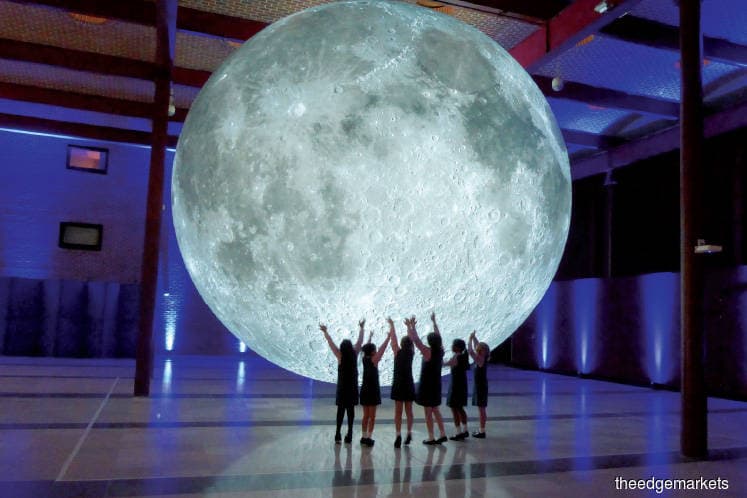
This article first appeared in The Edge Financial Daily on May 13, 2019
Ever since the first hot-air balloon ascended into the skies in the 18th century, inflatable objects have inspired the public’s imagination, generating utopian dreams of castles in the sky, floating laboratories, and cloud cities. Floating Utopias, which kicks off on May 25 at Singapore’s ArtScience Museum, is a playful and poetic exhibition that explores the social history of inflatable objects, showing how they have been used in art, architecture and social activism over the decades.
Visitors can expect a dazzling visual experience, with over 40 artworks by more than 15 international and local artists. The impressive impact of inflatable objects will be conveyed through eight large-scale air-filled sculptures which will be suspended in the galleries, creating a series of dramatic spectacles along the route of the show.
With the invention of the hot air balloon, humanity was able to leave the confines of the ground for the first time and experience the Earth from above. Floating Utopias explores how this pivotal invention shaped the way we understand the world and our place in it. It shows how ballooning became a source of mass fascination for the public in the 18th and 19th century, inspiring new modes of travel and communication, and prompting scientific innovation.
It charts how a new generation of experimental architects began using inflatable structures in the 1960s, as they searched for new approaches to designing space. And it delves into the work of artists who have utilised inflatable objects in surreal, unexpected or unconventional ways. Throughout the exhibition, photographs, documents, and films show how inflatable objects have used for political purposes, historically in State parades and spectacles, and in more contemporary times, by activists as tools for protest.
Floating Utopias will be presented in five chapters: Balloon Fever, Display and Disrupt, Bubble Architecture, Solar Sustainability and Vertical Exploration. Highlights include a dramatic outdoor installation, Castle of Vooruit (2012), by Turkish artist Ahmet Ogut. One of the exhibition’s key works is a social sculpture, Mirror Barricade (2016), consisting of 18 silver reflective inflatable cubes, created by the group, Tools for Action (Artur van Balen and Tomas Espinosa). The cubes can be assembled within seconds to form a barricade.
World renowned Argentinian artist Tomas Saraceno is present in the exhibition with the Aerocene Explorer, a personal solar-powered flight kit. The installation urges visitors to think about the possibility of environmental-friendly air travel that is energy independent. Inserting a female narrative into aerospace history is a video installation by Anna Hoetjes, contemporary visual artist, film-maker and co-curator of Floating Utopias. The exhibition culminates with a section that explores how inflatable objects have opened up a new direction for scientific research, sparking mankind’s imagination to travel beyond Earth and into space.
To commemorate the 50th anniversary of the Moon Landing in 1969, ArtScience Museum has commissioned UK artist, Luke Jerram to create a new version of the stunning inflatable installation, Museum of the Moon. Measuring 6m in diameter, the massive lunar sculpture features detailed, high-resolution Nasa imagery of the lunar surface. The 3D moon will hang just above viewers’ heads, compelling visitors to come close and circle the installation as each angle of the moon is different. The earlier versions of this breathtaking art piece were shown in world-renowned spaces and institutions, including Natural History Museum in London, and the Beijing Olympic Water Cube.